Reclaimed Curbing
Reclaimed Medina Curbing
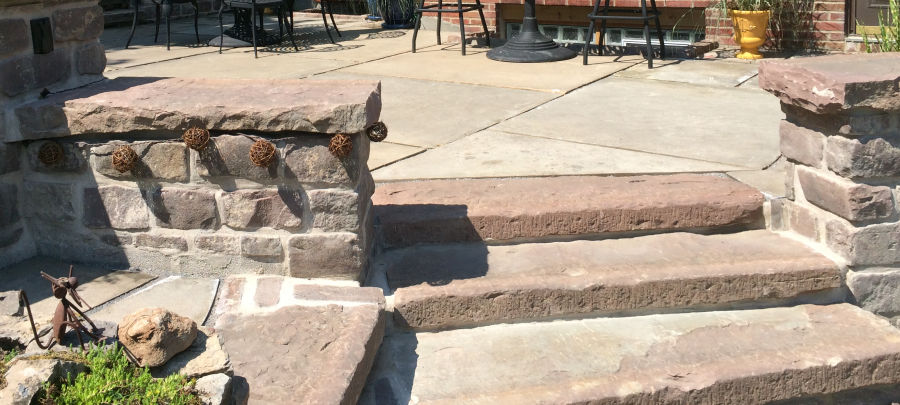
Used Medina curbing is reincarnated as steps and wall caps around this salvaged stone sidewalk patio. (more pictures)
Reclaimed Medina Curbing
Shortly after Medina stone was discovered during construction on the Erie Canal, its popularity exploded for paving and construction. When we reclaim Medina curbing, we find it in stunning shades of brown, tan, gray and red.
In many Northeast cities, including Cleveland and Syracuse, you can still see historic Medina curbing on roadways — even if its been updated with modern paving. For more on the heritage of this recovered material, check out the history section.
Our customers create one-of-a-kind features around their homes and businesses with old curbing. Many use it for its original purpose, as edging around walkways, driveways, patios and more. You can also build steps and retaining walls, or lay it on its side to design fireplaces and other unique projects. Contact us today to discuss your needs and our current inventory.
Curbing as Rustic Steps
You can create steps from salvaged curbing that has a relatively flat face and top. Just lay the curb on its side, creating a step tread with all the character of a stone carved a century ago.
Curbing as Paving Stones
Curbing with one relatively flat side can be laid down as large pavers to create patios, driveways and walkways. The joint between the slabs can be straight and tight for a more formal look, or wider and rough for a more rustic appearance.
Curbing as Retaining Walls
When laid flat and stacked, curbing makes great retaining walls up to 10 feet high and provides many design options. The curb may be dry stacked, pinned together, battered or mortared. To create a clean look, expose the finished tops. For rustic appeal, expose the bottoms — or try a combination of both for a beautiful variation in texture.
Curbing as… Curbing!
Of course, the antique curbing we recover can be used as curbing again. It also works well for an edge restraint for steps, raised garden beds or stone path edging.
To discover more about the history of our reclaimed curbing, visit the History section below.
View Gallery Product History Download Cutsheet Request Pricing
View Reclaimed Medina Curbing in Action!
-
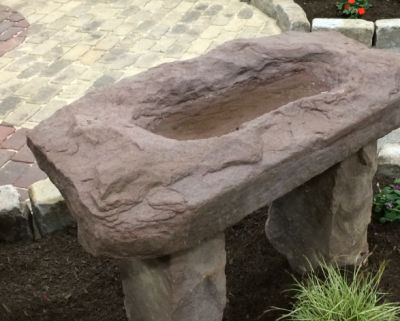 VIEW LARGER
VIEW LARGERMedina Curbing
Reclaimed Medina curbing can be carved into a birdbath. -
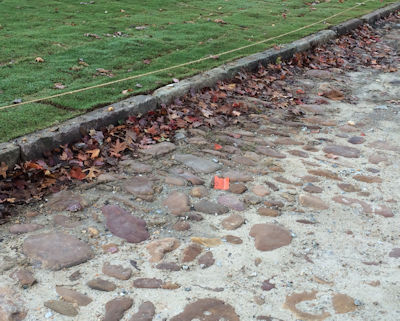 VIEW LARGER
VIEW LARGERMedina Curbing
Restoration of this historic site was made possible by antique curbing -
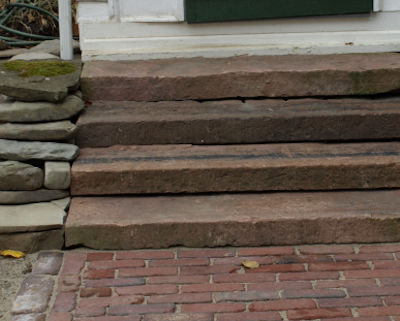 VIEW LARGER
VIEW LARGERMedina Curbing
Antique Medina stone curbing steps work well with the old brick paving in the walkway -
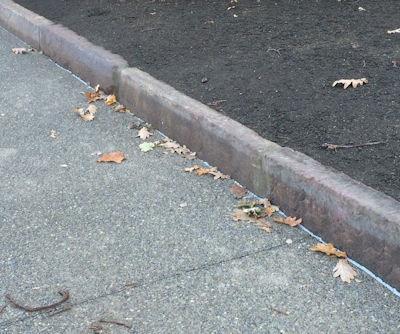 VIEW LARGER
VIEW LARGERMedina Curbing
Salvaged Medina stone curbing with exposed aggregate paving -
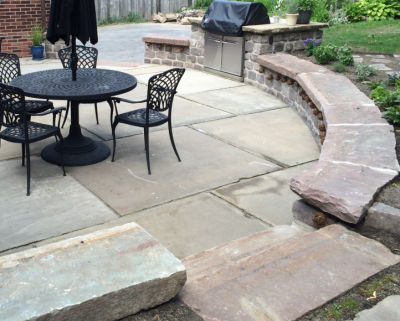 VIEW LARGER
VIEW LARGERMedina Curbing
A seat wall capped with used curbing enhances this historic house -
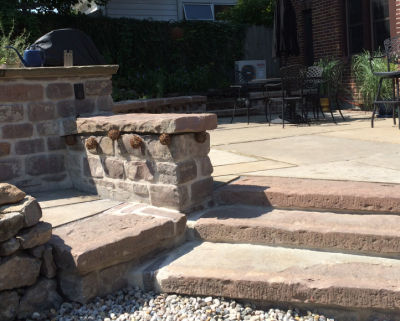 VIEW LARGER
VIEW LARGERMedina Curbing
Medina cobblestones used for the wall coordinate with the Medina curb -
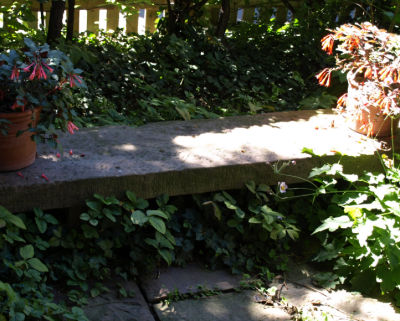 VIEW LARGER
VIEW LARGERMedina Curbing
An English garden bench and paving stones fashion from old curb -
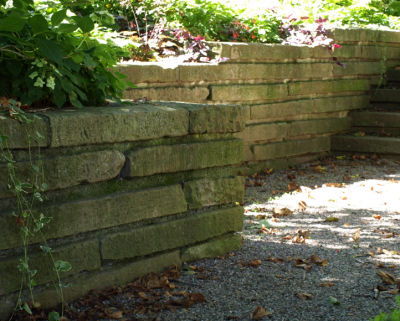 VIEW LARGER
VIEW LARGERMedina Curbing
Used stone curbing finds a new life as a garden retaining wall and steps -
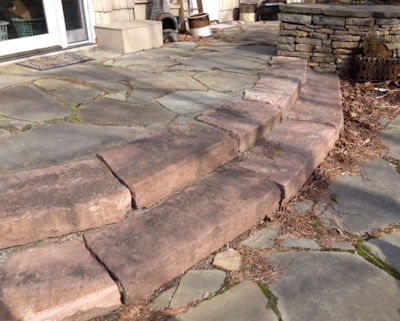 VIEW LARGER
VIEW LARGERMedina Curbing
The antique look of these used curbing steps makes this patio -
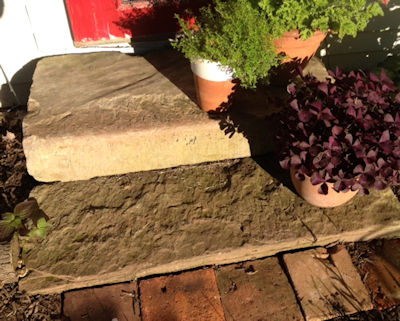 VIEW LARGER
VIEW LARGERMedina Curbing
Historic Farm House used Medina curbing to keep the authentic character -
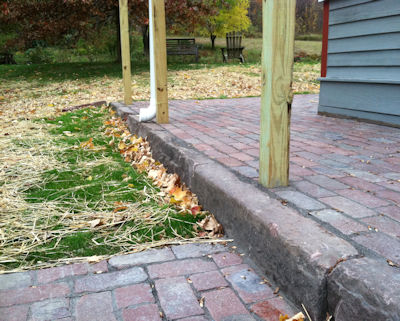 VIEW LARGER
VIEW LARGERMedina Curbing
Antique street bricks and curbing come together again in a reuse project -
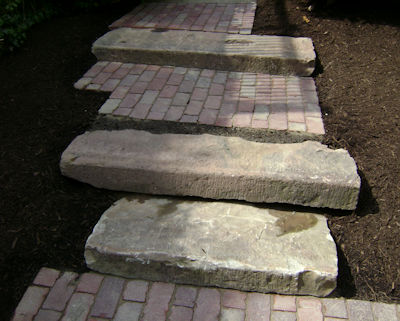 VIEW LARGER
VIEW LARGERMedina Curbing
Used curbing and used street bricks enhance this rustic pathway -
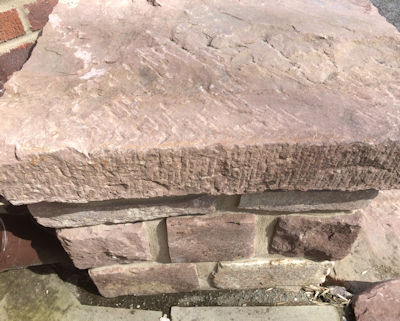 VIEW LARGER
VIEW LARGERMedina Curbing
The masons tool marks are clearly visible on 120 year old curbing -
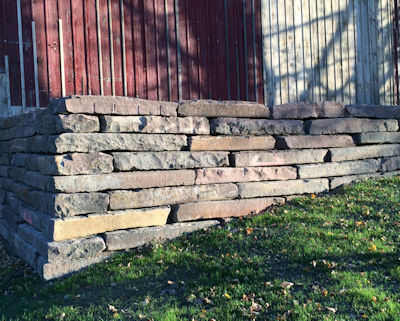 VIEW LARGER
VIEW LARGERMedina Curbing
Reclaimed Medina curb retaining wall is battered to support a 6’ height -
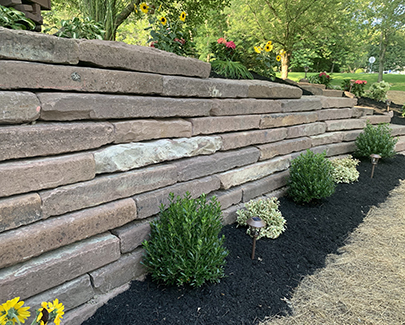 VIEW LARGER
VIEW LARGERMedina Curbing
Antique curb retaining wall was dry stacked and pinned -
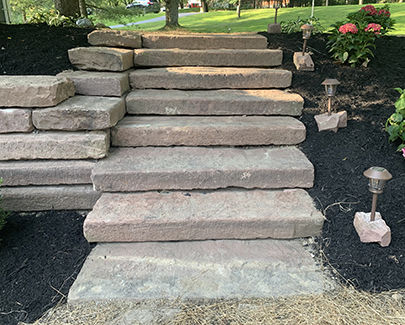 VIEW LARGER
VIEW LARGERMedina Curbing
Salvaged medina curbing installed as stone steps and antique stone retaining wall.
A Snapshot of Medina Curbing History
Medina stone was first discovered during the construction of the first Erie Canal in the 1820s. An excellent paving and construction material, the stone was used for roads, bridges and hundreds of public buildings, churches, mansions and farmhouses. After curbing and building block were cut, cobblestones were created from the smaller pieces that were left over and used to pave roads.
Eventually, cobblestone roadways were constructed all over New York State and as far west as Michigan, Wisconsin and Colorado. To satisfy demand, numerous quarries opened near Medina, New York, where the stone was excavated in stunning shades of red, brown, tan and gray. These quarries are all abandoned today, but the stone they produced is still as vibrant and durable as ever.
How Medina curbing was made
To make curbing, large blocks of Medina stone was split into sheets and broken down into curb-sized pieces. The top and street-side faces of the curb were hand-tooled to create a flat surface. Today, marks from these tools are still clearly visible, showing the incredible workmanship that went into the curb’s creation.
In later years, curbing slabs were cut from large blocks using a saw, creating very flat sides; the tops were still usually hand-tooled. You may see both types of reclaimed curbing in your order.